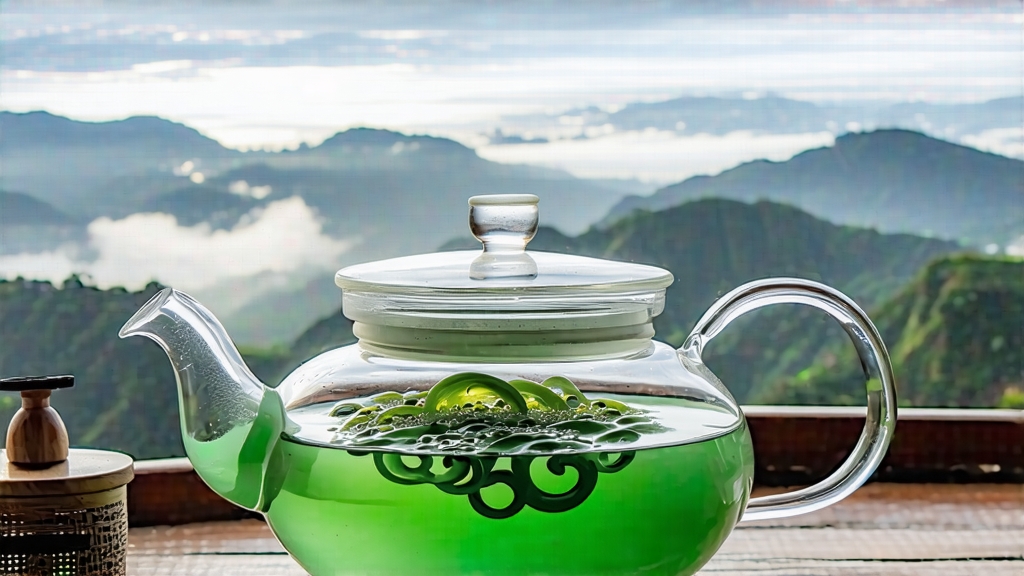
Biluochun, whose name translates literally to “Green Snail Spring,” is one of China’s ten most celebrated teas, yet it remains a quiet mystery outside the circles of serious tea lovers. Grown in the mist-locked hinterland of East China’s Dongting Mountain range in Jiangsu Province, this tea is prized for its improbably tiny spiral shape, downy silver-green coat, and a fragrance so intense that, when first shipped to the imperial court in the late Ming dynasty, palace ladies are said to have accused tea porters of hiding illicit bouquets among the leaves.
History and Legend
The earliest written record appears in the 1644 county gazetteer of Wu County, describing a tribute tea called “Xia Sha Ren Xiang” (literally “Scary-Fragrant”). Local lore claims a tea picker, running late for her wedding, stuffed fresh leaves into her bosom; body heat triggered an unexpected enzymatic transformation, releasing an intoxicating aroma that startled villagers. Whatever the truth, the Kangxi Emperor (r. 1661-1722) found the name inelegant and rechristened it Biluochun to honor its snail-like curl and spring harvest. From that moment the tea joined the ranks of imperial tribute, traveling northward on the Grand Canal in sealed bamboo cylinders cushioned by lotus leaves.
Terroir: Lake, Mist, and Fruit
Unlike many Chinese greens that thrive at altitude, Biluochun prospers at a modest 100–300 m above sea level on the eastern and western peninsulas of Lake Taihu. The vast body of water creates a thermal reservoir, generating nightly fogs that filter sunlight and coax slow, amino-rich growth. What makes the microclimate even more singular is the interplanting of tea bushes among peach, plum, and apricot trees. Petals fall, decompose, and become part of the topsoil, lending a subtle floral substrate that connoisseurs swear they can taste in the cup.
Cultivars and Grades
The original landrace is the Dongting小叶群体种, a mixed population of seed-propagated bushes with tiny leaves and low yield but unmatched aromatics. Since the 1980s clonal selections such as Dongting No. 7 and No. 9 have increased output and frost resistance, yet purists still chase the “wild bush” cakes sold by village cooperatives. Grading follows a 1-to-7 scale based on picking date, bud-to-leaf ratio, and spiral tightness. Supreme Grade 1 is picked Qingming (early April) and contains roughly 60,000 buds per 500 g; Grade 7, harvested after Guyu, already shows open leaves and a woodier profile.
Plucking Ritual
The picking window is brutally short: dawn to 9 a.m. on clear days when the dew has lifted but the sun is still mild. Two rules dominate—“one bud with one just-unfurled leaf” and “no fingernails.” Pickers roll the shoot between thumb and index pad, snapping it cleanly so cell walls remain intact and oxidation enzymes stay dormant. Baskets are woven bamboo lined with nettle cloth to prevent bruising; any pile-up thicker than 5 cm risks suffocation and off-flavors.
Crafting the Spiral: A Six-Act Drama
- Withering: The leaves are spread on perforated bamboo trays for 2–3 hours in shaded draft. Moisture drops from 76 % to roughly 68 %, softening tissues for the shaping to come.
- Fixation (Kill-Green): In woks held at 180 °C a single 250 g batch is tossed by hand for 3–4 minutes. The motion is wrist-driven, almost calligraphic: lift, shake, scatter, gather. Polyphenol oxidase is thermally denatured, locking in the vivid emerald hue.
- Primary Rolling: Temperature drops to 70 °C; the master presses the mass against the wok with a palm-sized flax cloth, twisting gently. Buds begin to curl, but the tight snail form is still a promise rather than reality.
- Re-rolling & Spiral Formation: Now the most virtuosic step. The cloth is gathered into a loose pouch, rolled on a rattan mat with alternating clockwise and counter-clockwise pressure for 15 minutes. Buds emerge as tiny spirals, each about the size of a mouse whisker.
- Secondary Drying: 60 °C for 10 minutes reduces moisture to 20